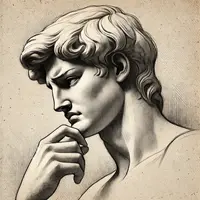In the vast landscape of philosophical inquiry, few allegories have endured with the persuasive power and enigmatic depth as that of Plato's Cave. This allegory, found in Book VII of 'The Republic,' offers a profound commentary on the human condition, knowledge, and the pursuit of truth. At its core, the Allegory of the Cave is not merely a story about prisoners shackled in darkness, but a metaphorical journey tracing the evolution of the human soul from ignorance to enlightenment. This allegory beckons us to examine the shadows on the walls of our own caves and challenges us to seek the light of understanding beyond the confines of our limited perceptions.
The setting is deceptively simple: prisoners are chained in a cave, facing a blank wall, with a fire burning behind them. Between the fire and the prisoners, objects are moved along a path, casting shadows on the wall. To the prisoners, these shadows constitute reality, for they know nothing else. This scenario symbolizes how human beings are often trapped in a limited understanding of reality, seeing only a fraction of the truth. The shadows represent perceptions shaped by sensory experience, societal norms, and unexamined beliefs. The journey out of the cave and into the sunlight symbolizes the philosopher's ascent to knowledge and the discovery of higher truths.
One might ask, what does this allegory mean for us today? In our contemporary world, where information is abundant yet often distorted, the shadows on the wall are ever-present. They manifest in the form of media narratives, cultural biases, and personal prejudices. To truly grasp the nature of reality, we must be willing to question the veracity of these shadows. Plato's allegory urges us to cultivate a philosophical mindset, one that embraces critical thinking, skepticism, and the relentless pursuit of truth. It challenges us to break free from the chains of ignorance and to venture into the uncharted territory of intellectual discovery.
The path out of the cave is fraught with difficulty. It requires courage to confront the unfamiliar and to question long-held beliefs. As the prisoner ascends, he is initially blinded by the light—a metaphor for the disorienting experience of encountering new ideas that challenge established paradigms. However, with perseverance, the prisoner begins to see the world as it truly is, basking in the clarity of knowledge and understanding. This transformation reflects the philosopher's journey, as well as the potential within each of us to transcend ignorance and embrace enlightenment.
Moreover, the Allegory of the Cave speaks to the responsibility of those who attain understanding. The enlightened prisoner, having seen the world outside the cave, is compelled to return and share his insights with those still in darkness. This return, however, is fraught with peril, as the prisoners may resist or even reject the truth out of fear or complacency. Herein lies a profound ethical dimension: the philosopher, or any individual who gains insight, bears the moral obligation to share wisdom and foster understanding in others. This echoes the Socratic principle that knowledge is not merely for personal edification but a tool for societal betterment.
In reflecting on the Allegory of the Cave, we are invited to consider our own lives and the limitations we impose upon ourselves. Are we content with the shadows, or do we strive to uncover the reality they obscure? Plato's allegory encourages a life of introspection and inquiry, urging us to dismantle the illusions that bind us and to seek a deeper, more authentic understanding of the world. By doing so, we not only enrich our own lives but also contribute to the collective enlightenment of society.







